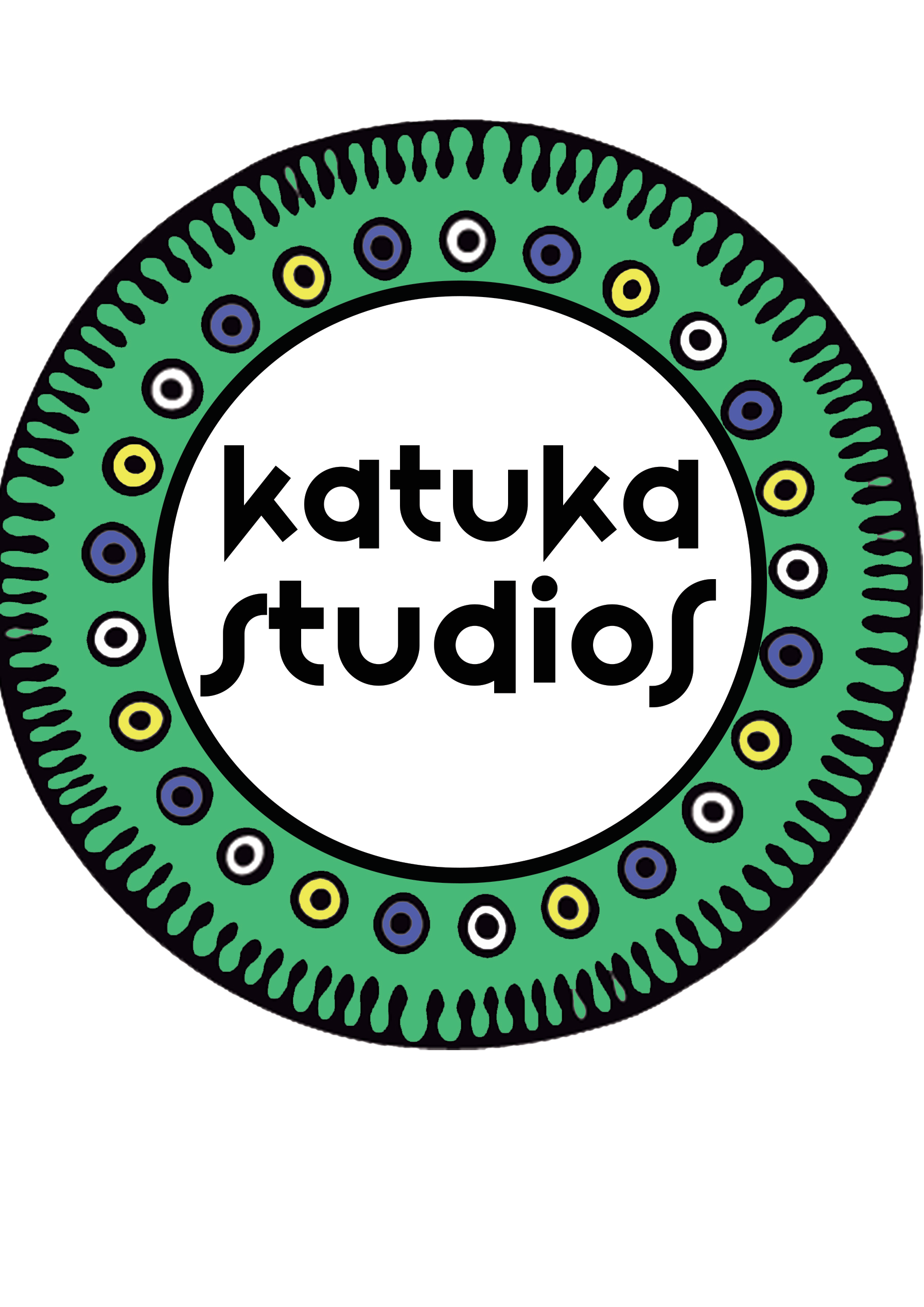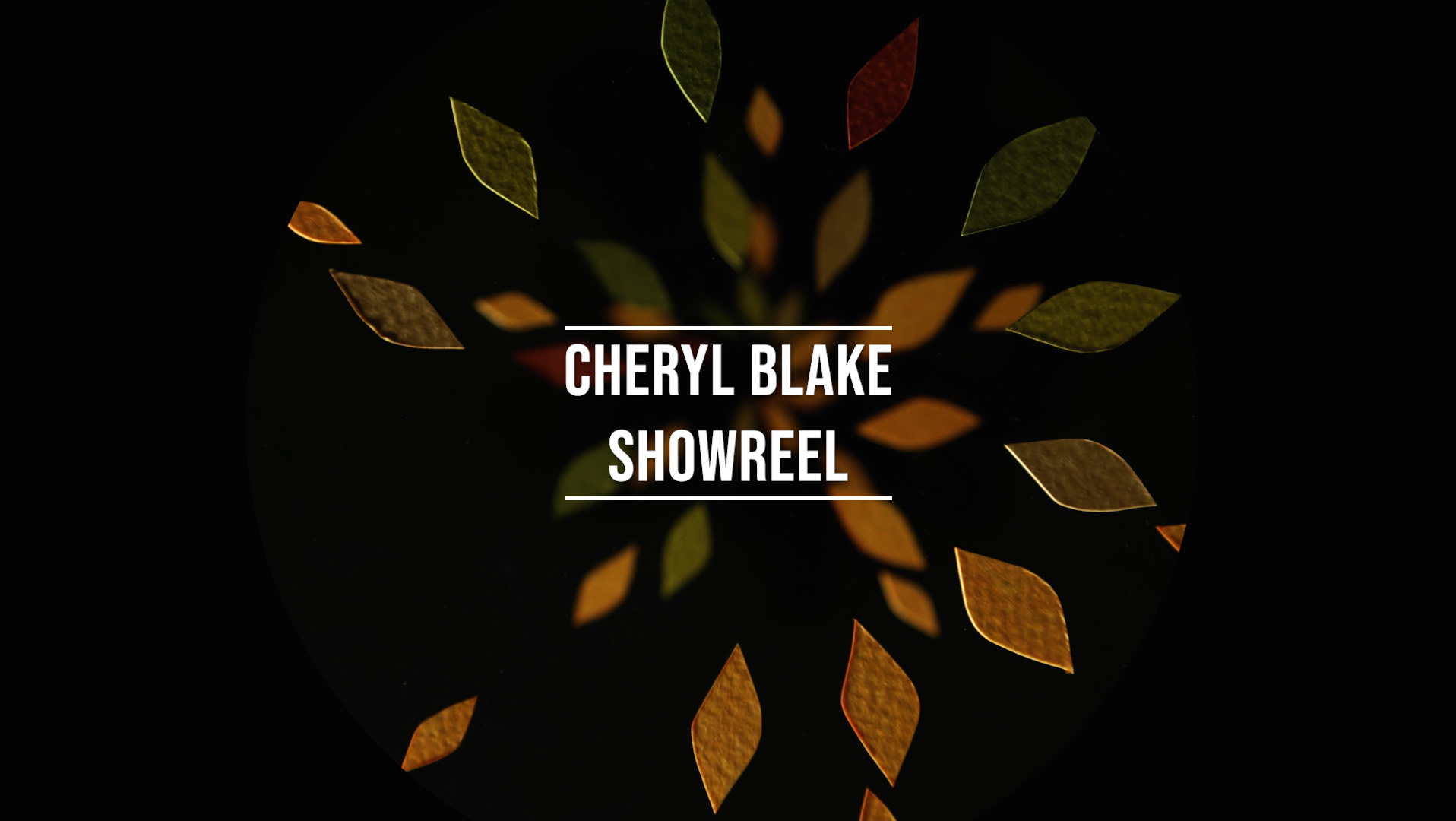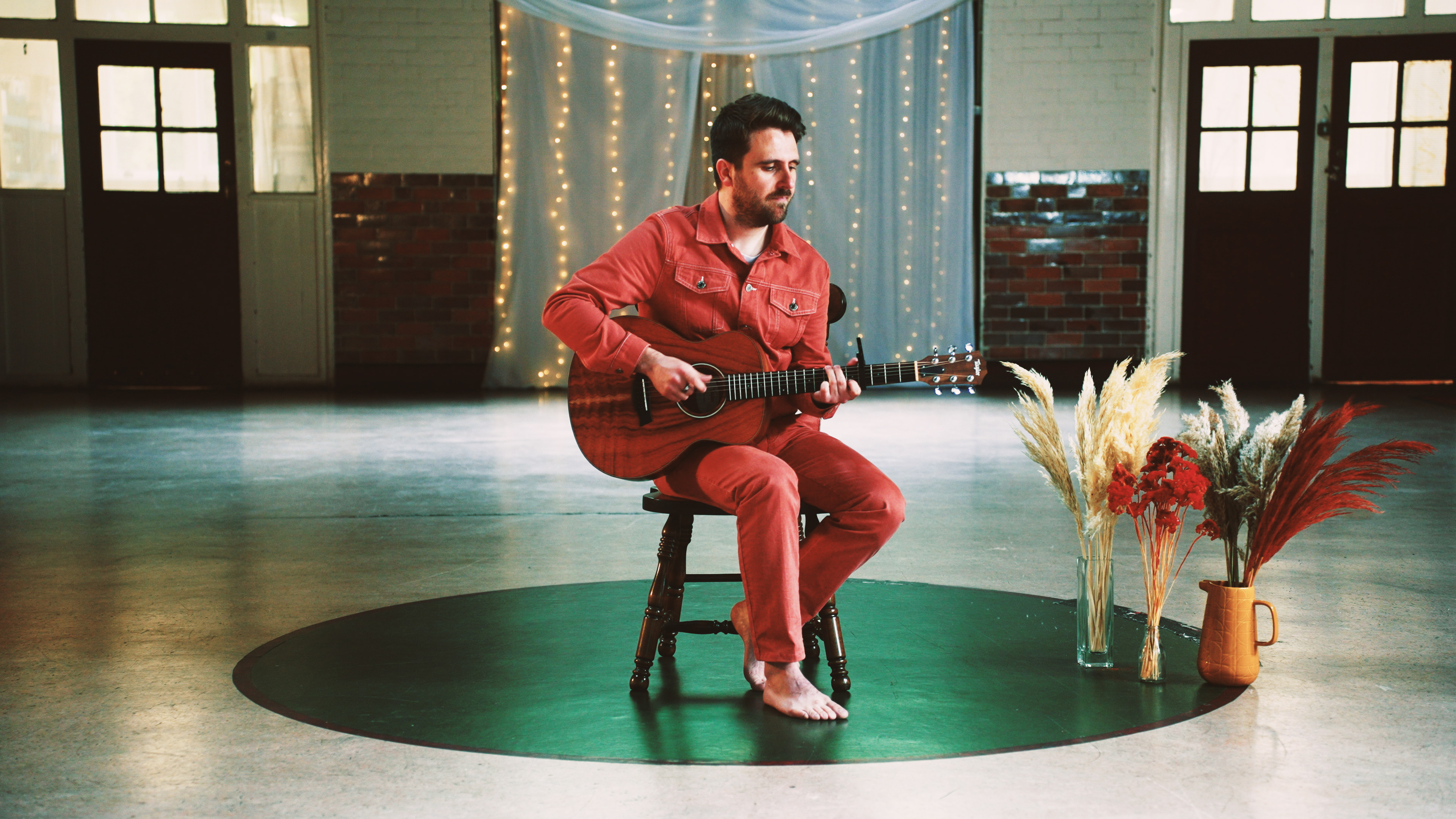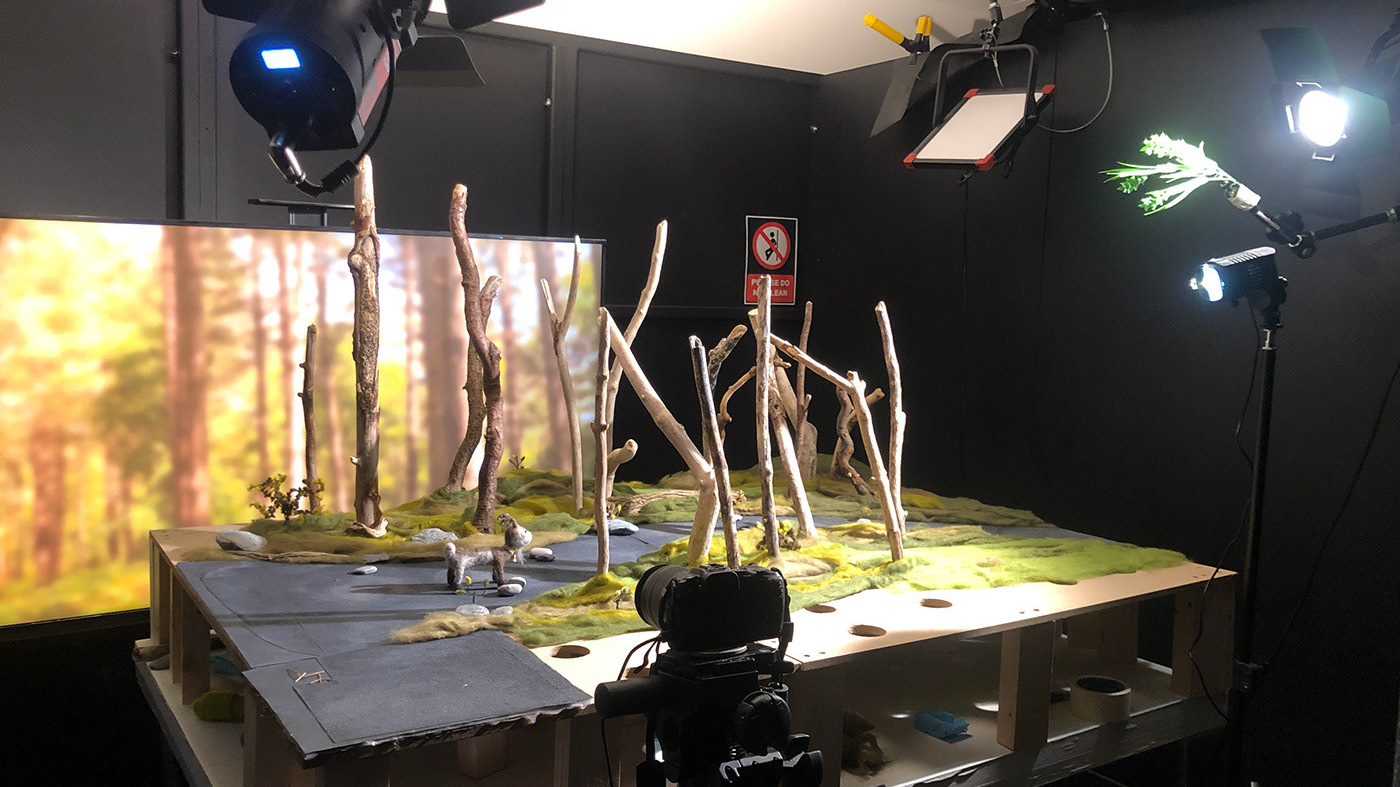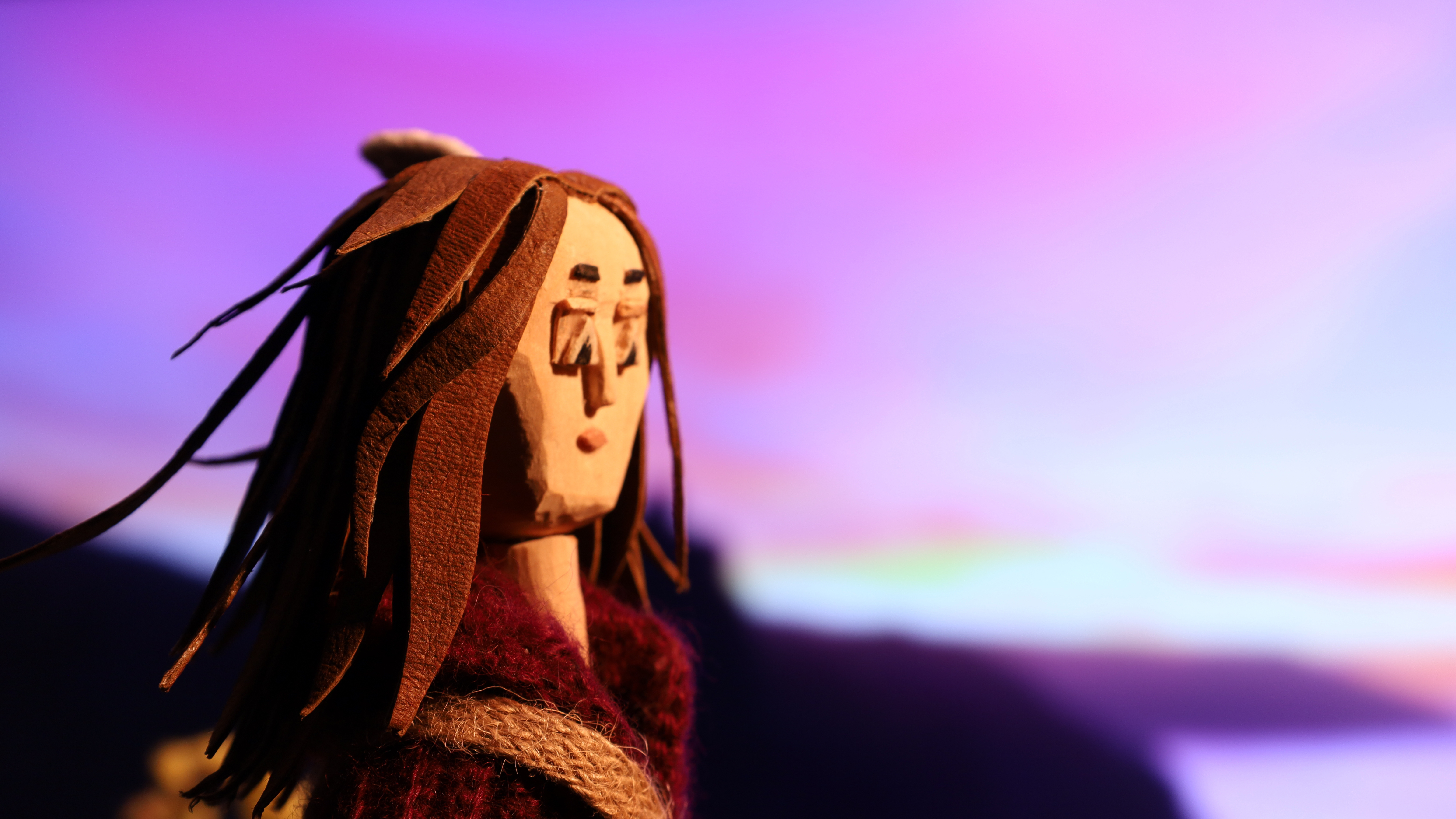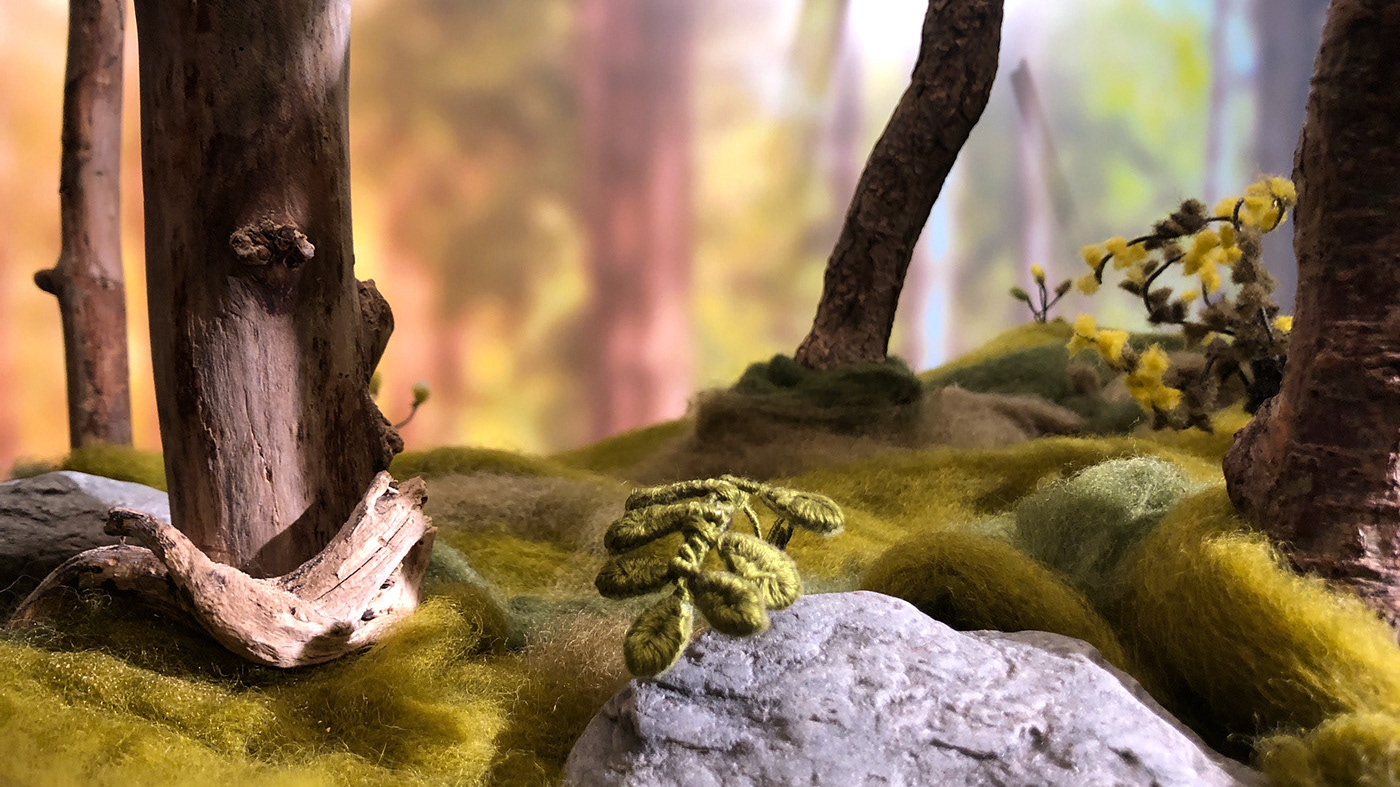The Night Fairy
Exploring virtual production methods and stop motion animation, the Night Fairy was a short collaborative project between myself and Jude Mulford - a ceramicist based in East Sussex.
Following early discussions, we talked about creating a short trailer for social media that explored the world and characters that might exist around her porcelain fairy houses, whilst exploring the technologies available to create a unique stop motion environment that combines traditional crafts with digital assets.
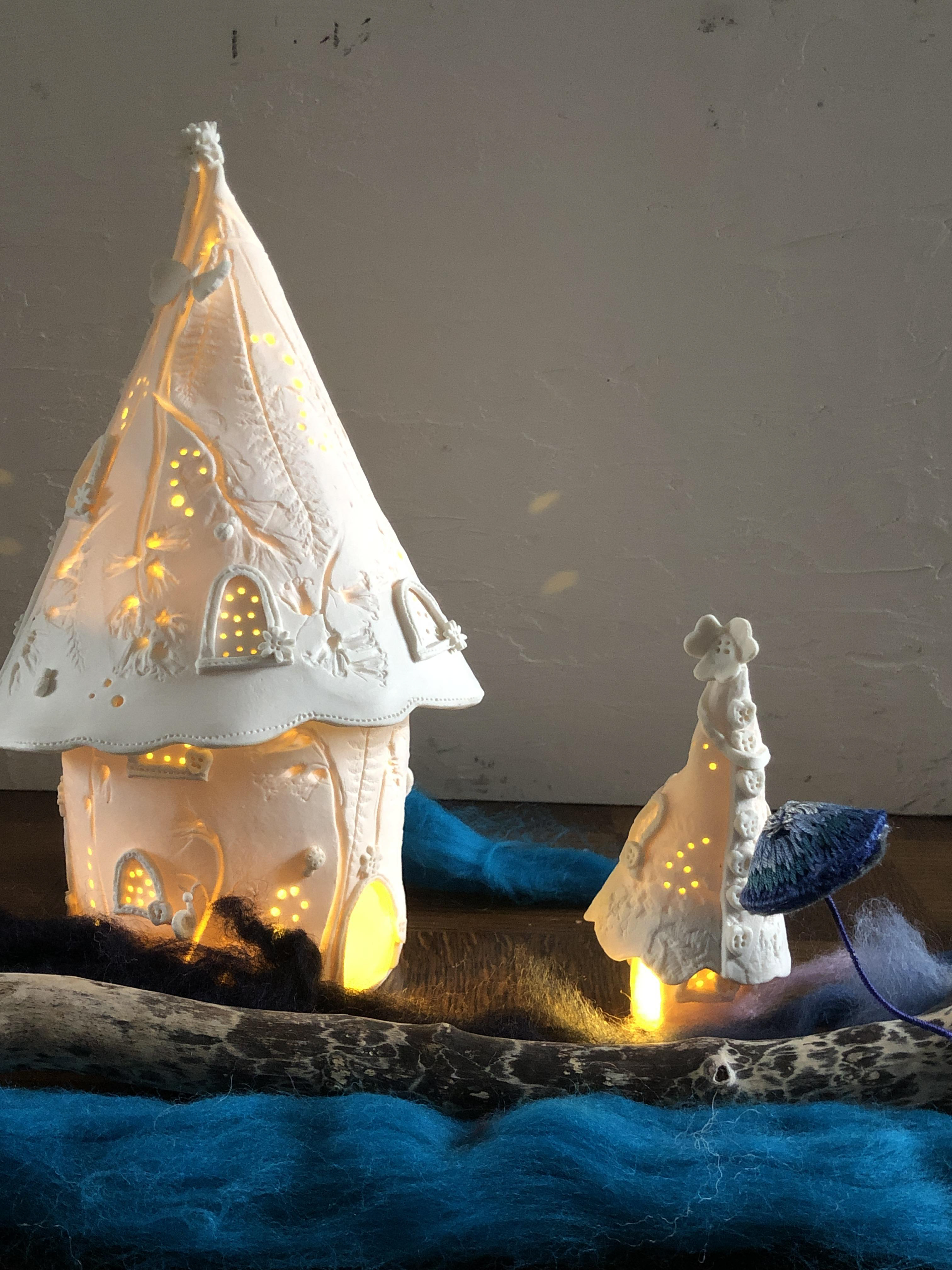
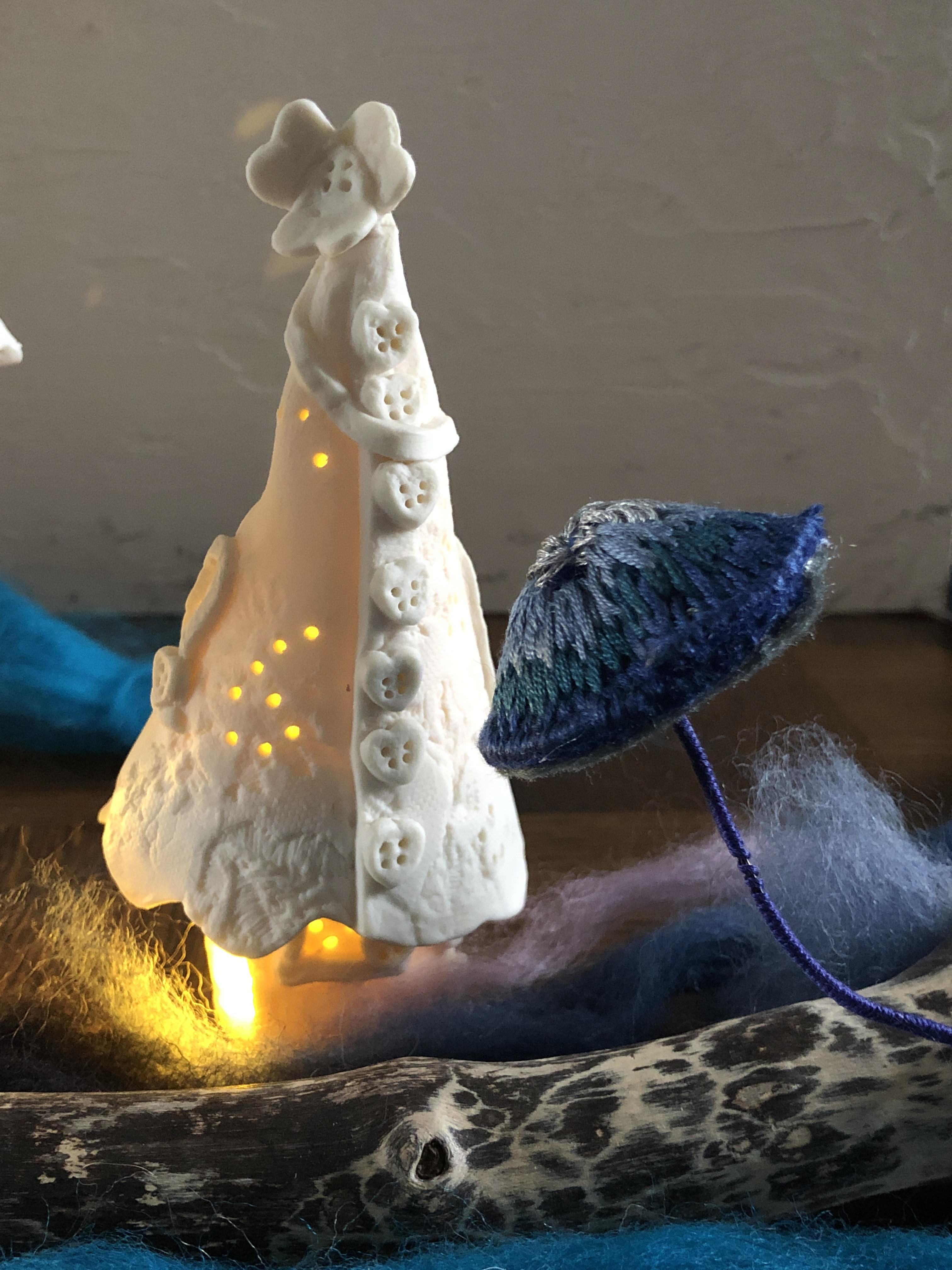
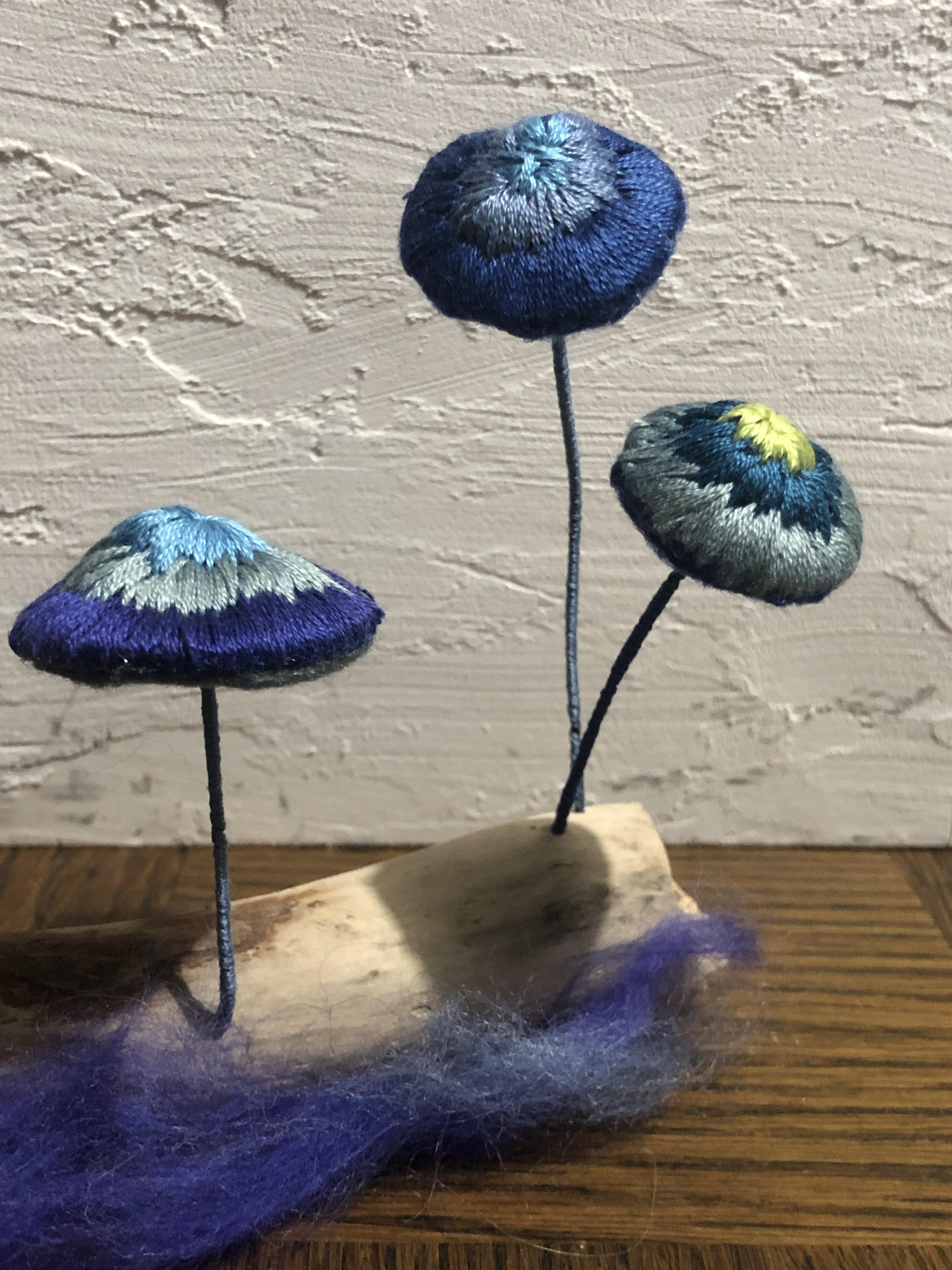
After exploring concepts, we landed on the simple idea of a fairy that appears at night time to collect light in a mushroom forest. Building on embroidery skills from Seaglass, I made these wired mushrooms to sit amongst the fairy houses and set, whilst exploring LED lights that could enhance the mood of the scenes in the final animation.
I also set to work designing and making a simple fairy puppet built around a wire armature - looking for the ability to rig her to be able to fly and perform simple character scenes. Wings were made from floral wire and sheer fabrics as I wanted to experiment with how light from the virtual environment would translate through the fabric.
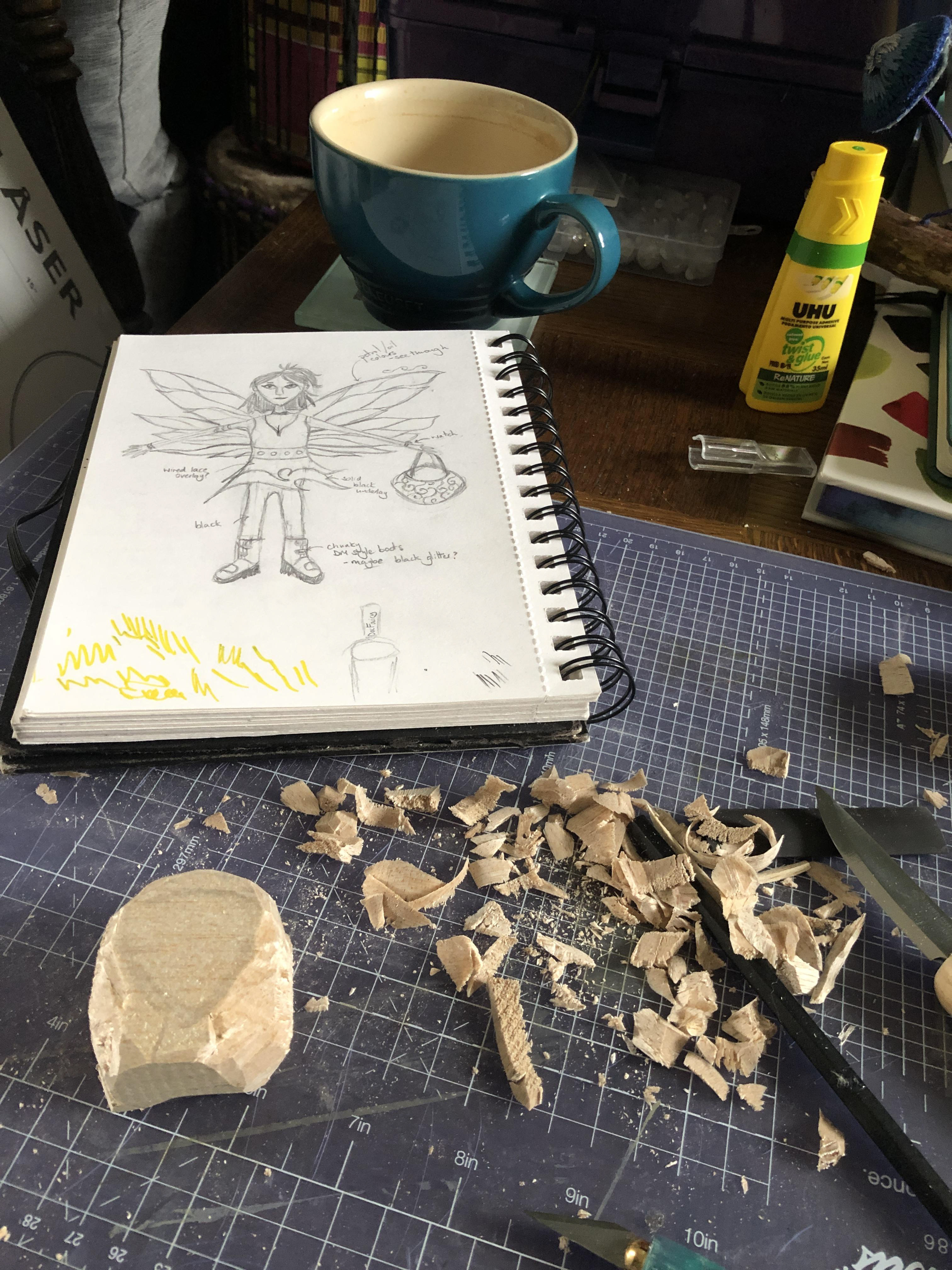
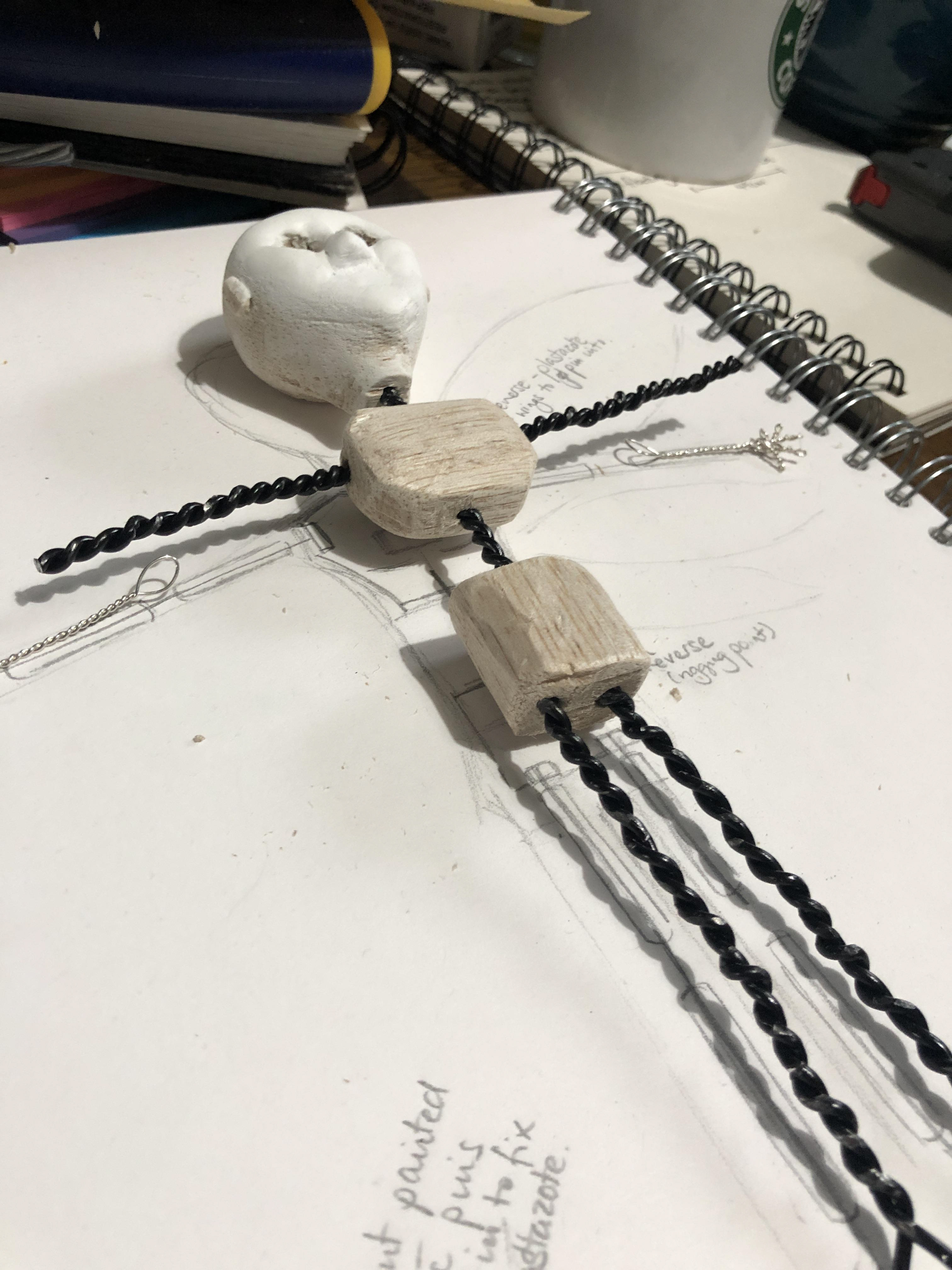
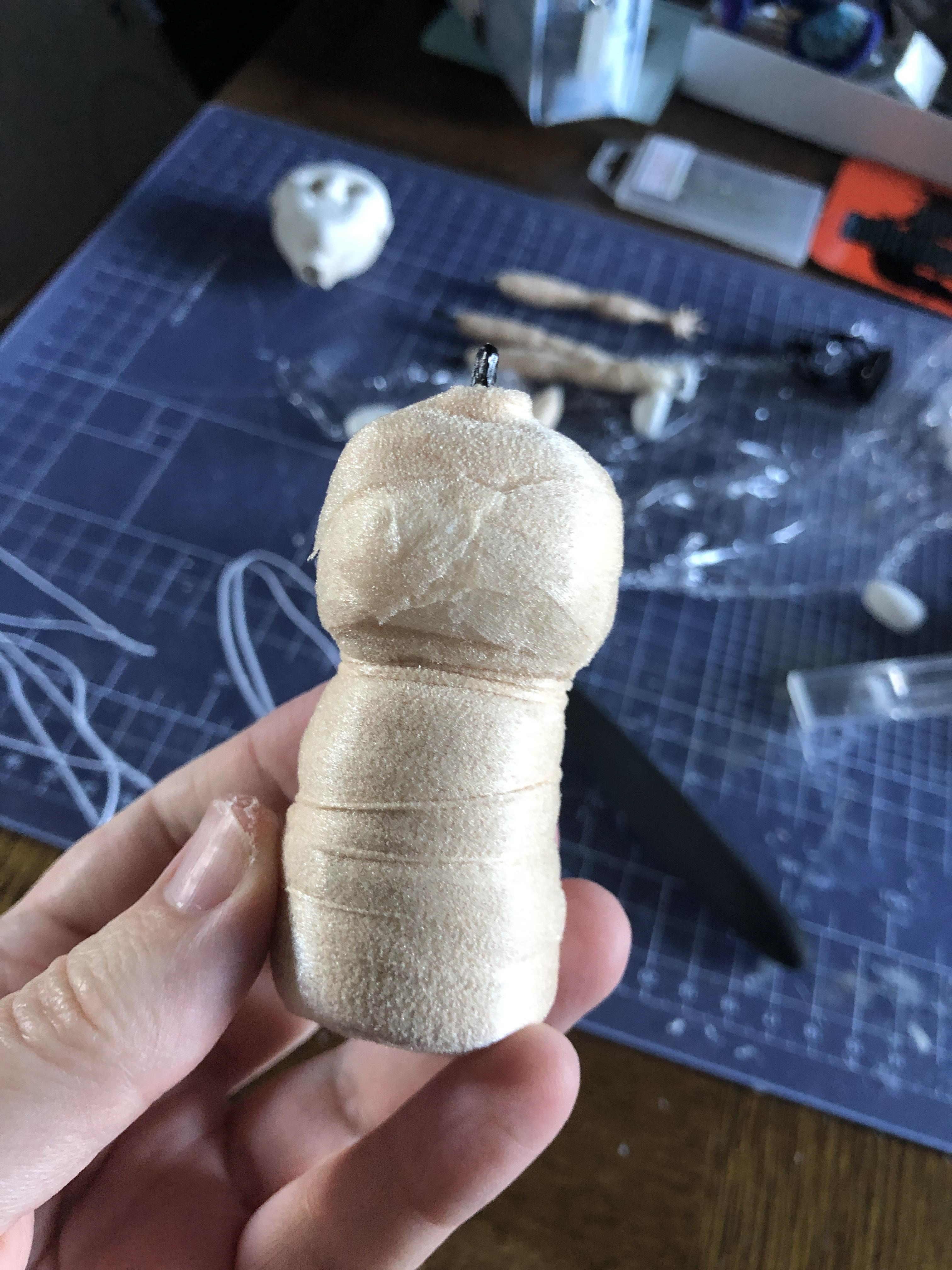
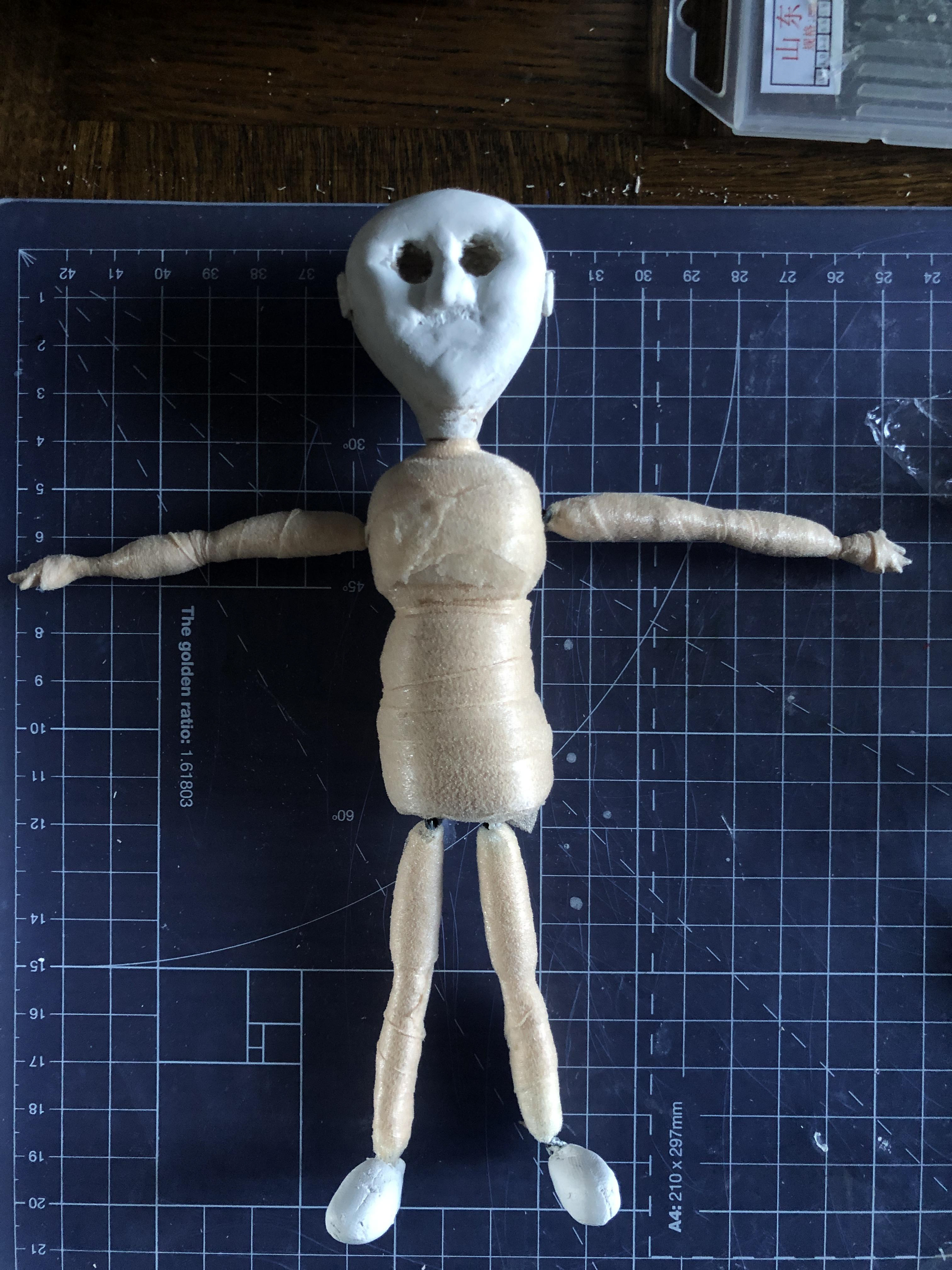
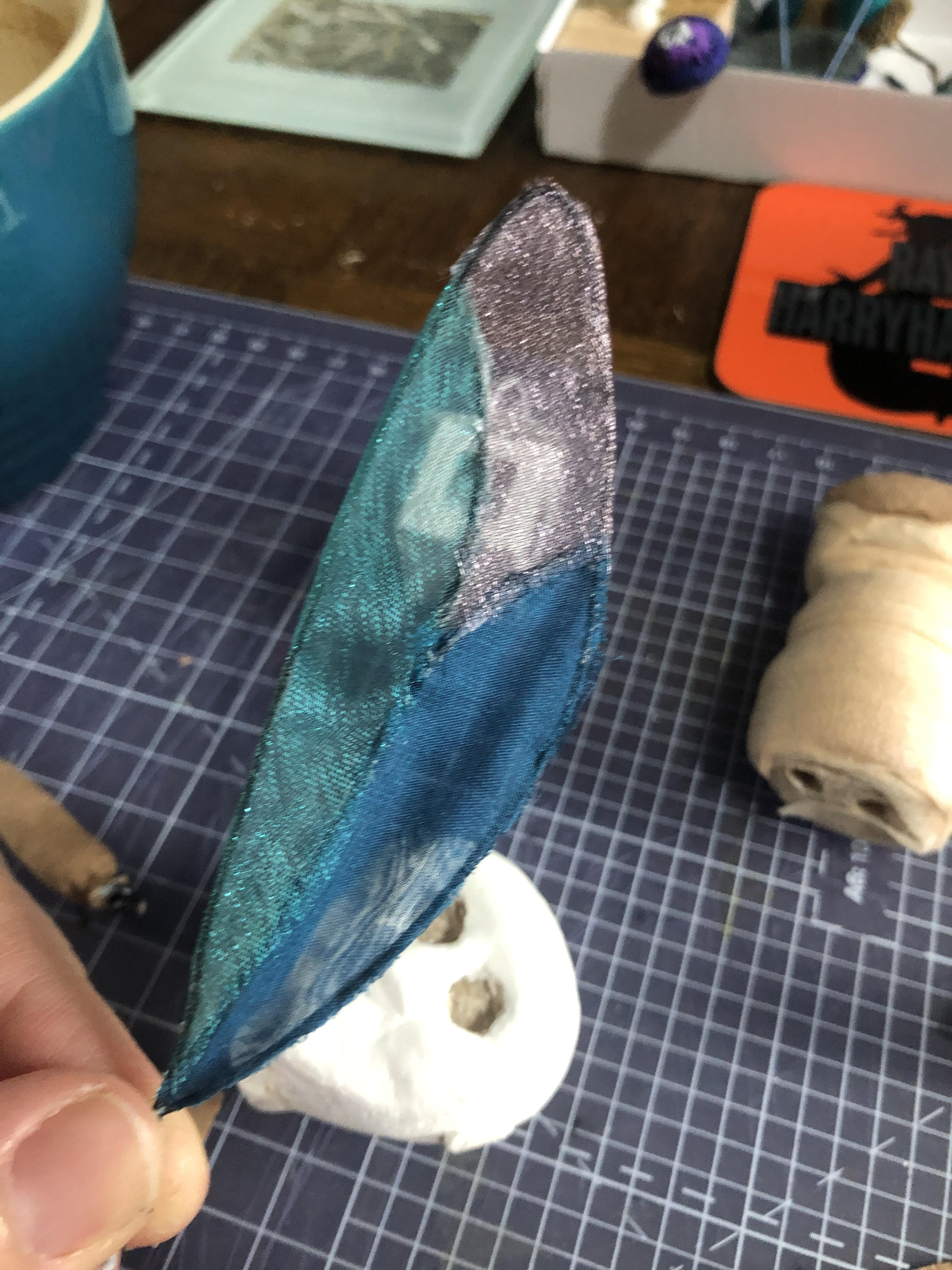
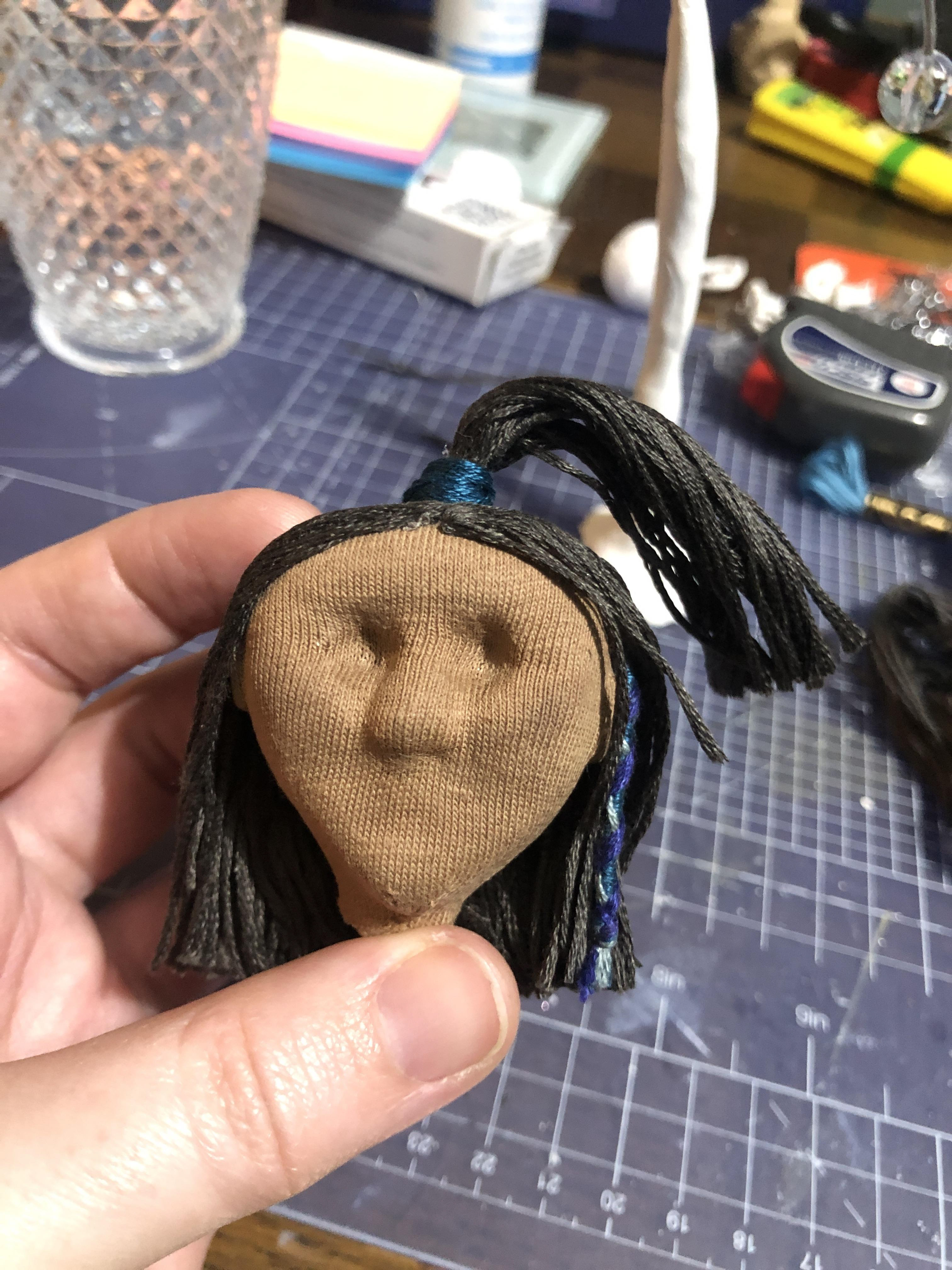
With the framework of the puppet established, I reached out to costume designer Phoebe Niemira and she worked on bringing the soft punk feel to our puppet, using a mixture of lace-effect skills and a variety of wired and non-wired elements.
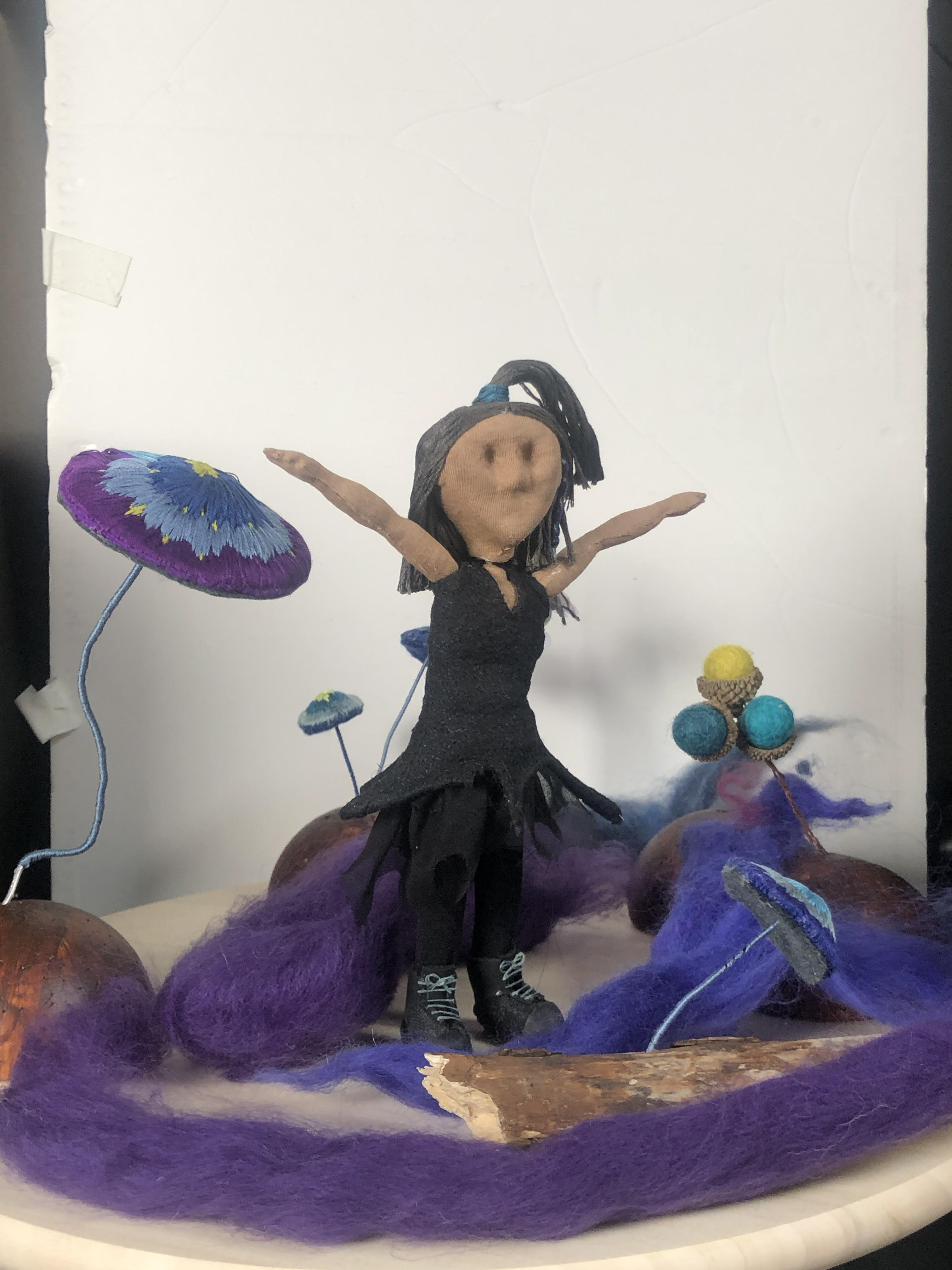
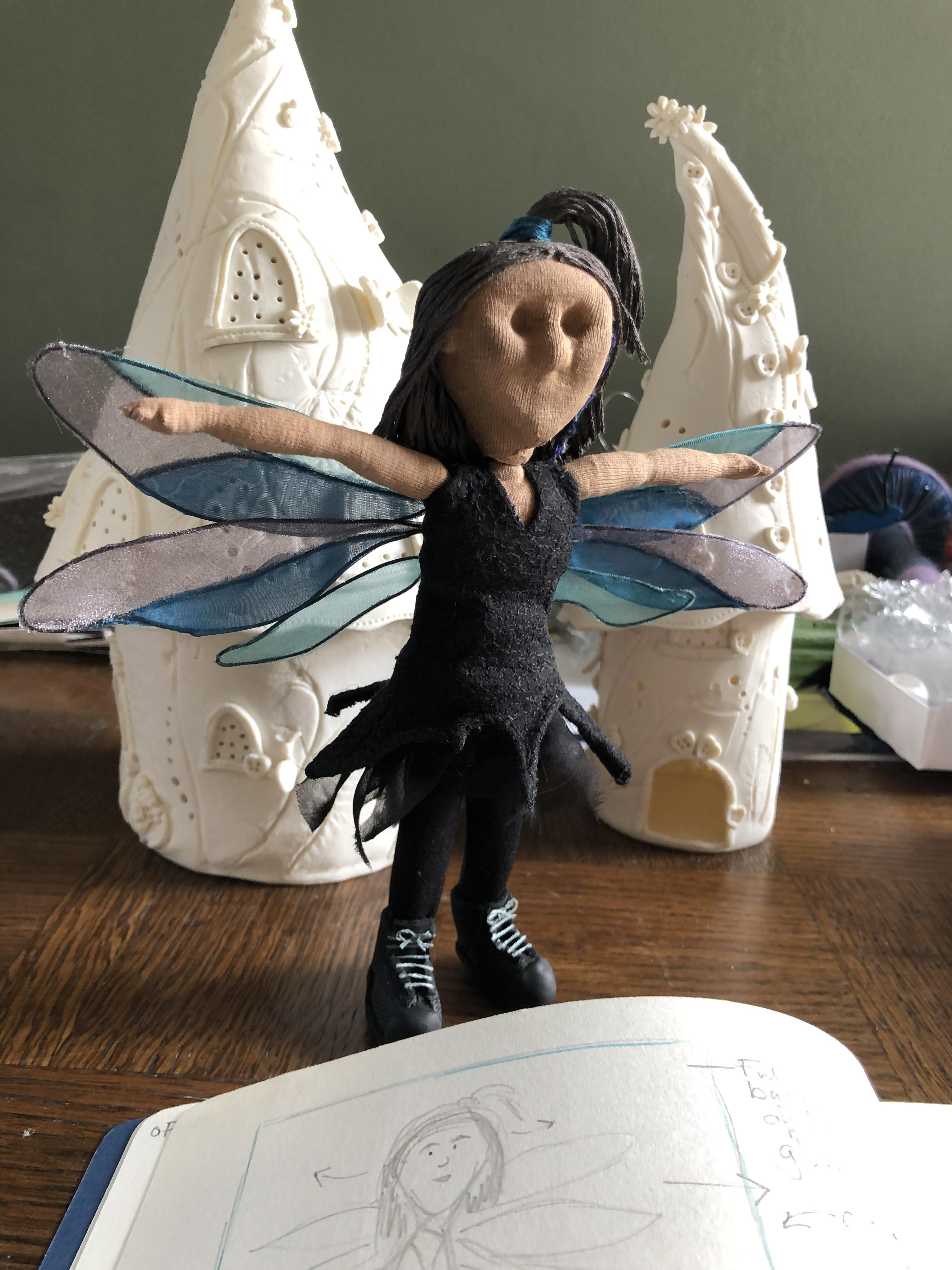
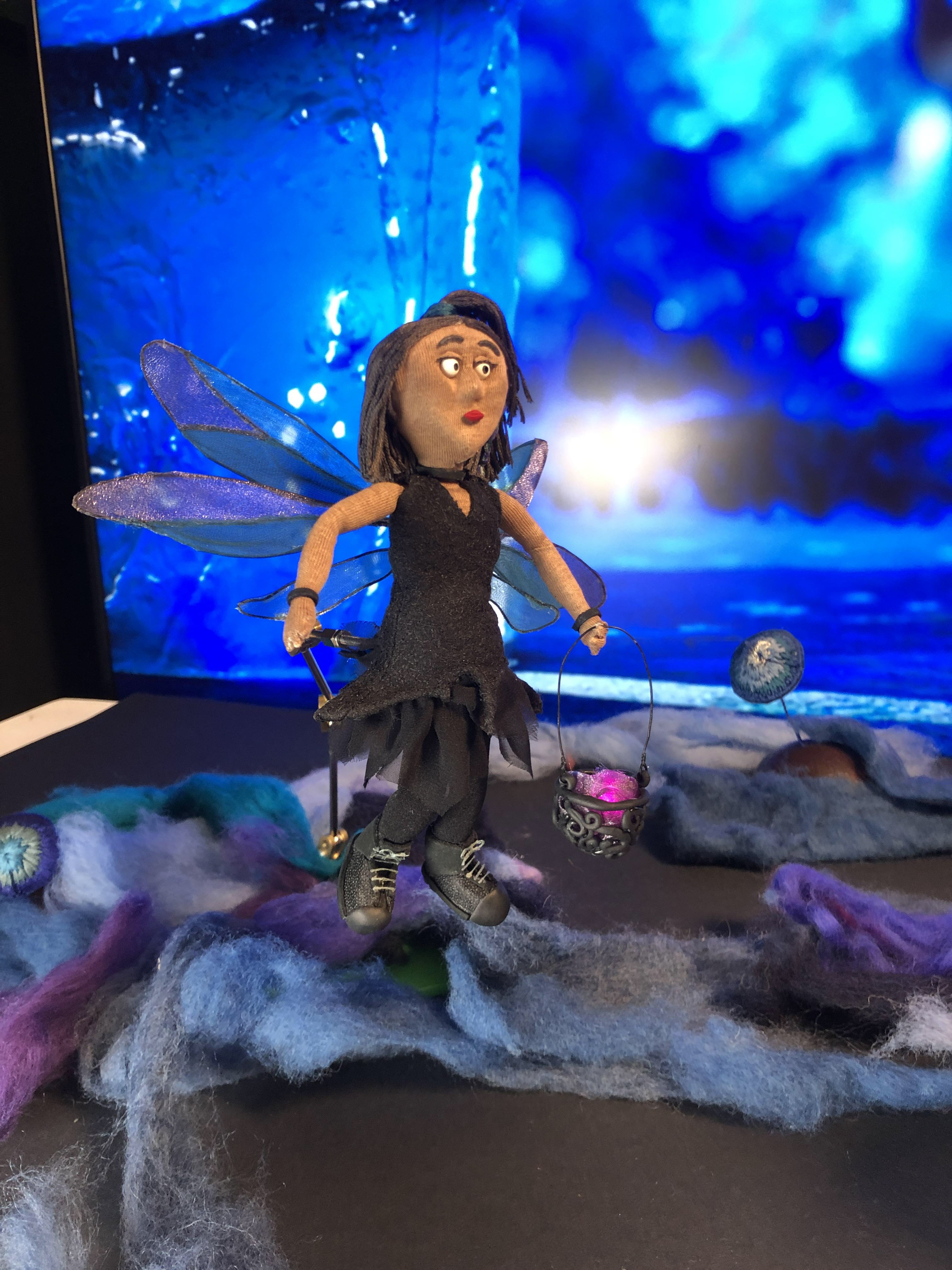
At the same time, we were working on building the digital background for this project. Using RealityScan, we used photogrammetry to create 3D models of Jude's fairy houses to enable us to place them in a digital environment in Unreal Engine. Daniel Maktabi, 3D Artist built an environment in Unreal which had softly moving flora and fauna; whilst I was particularly keen for us to utilise Niagara and explore how particle physics could be utilised in a virtual production pipeline for stop motion. Once the environment was built, Dan cleaned up the models from the scans, made adjustments for those closer to the camera and we explored camera angles, backgrounds and lighting effects for the project.
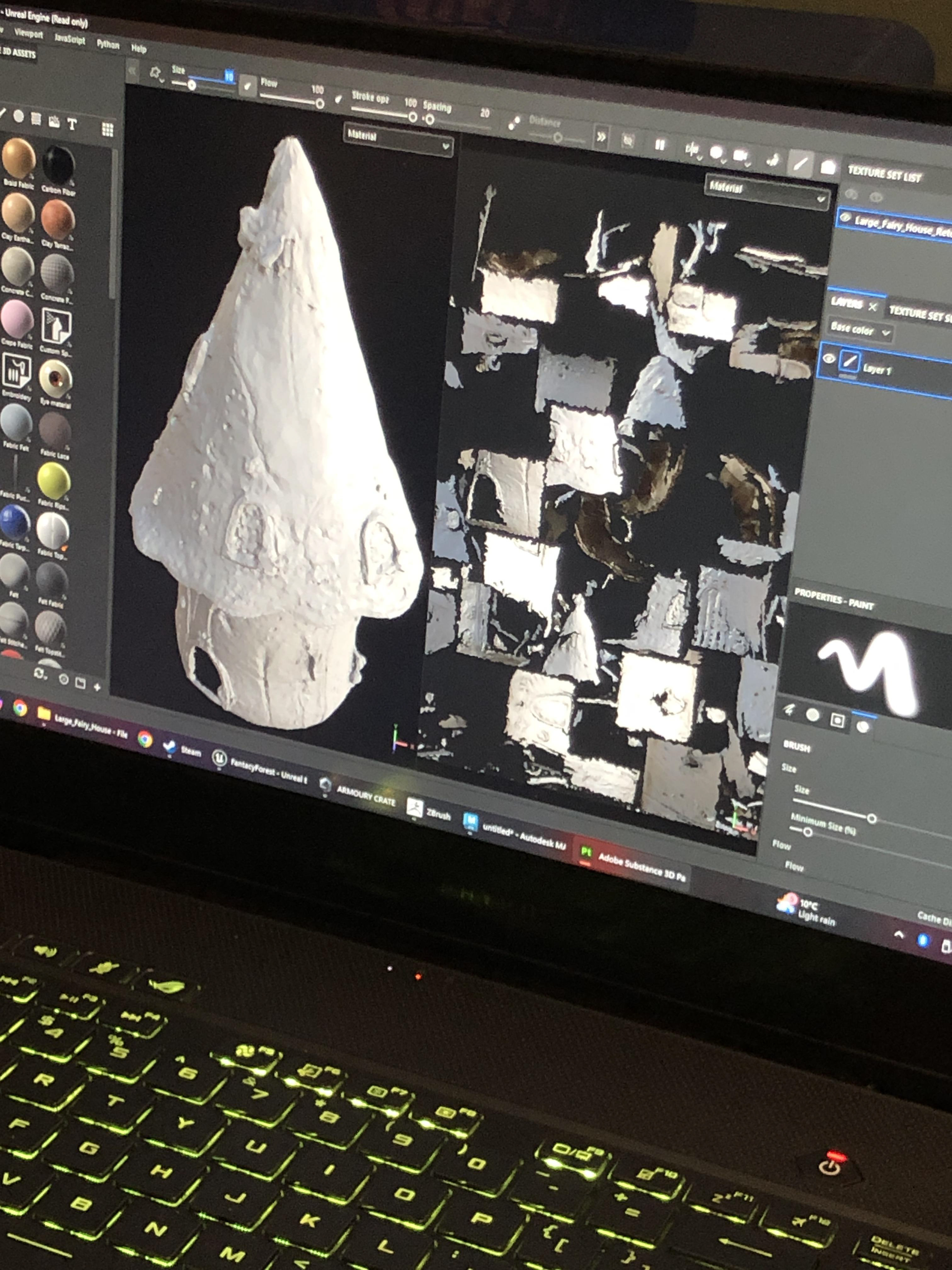
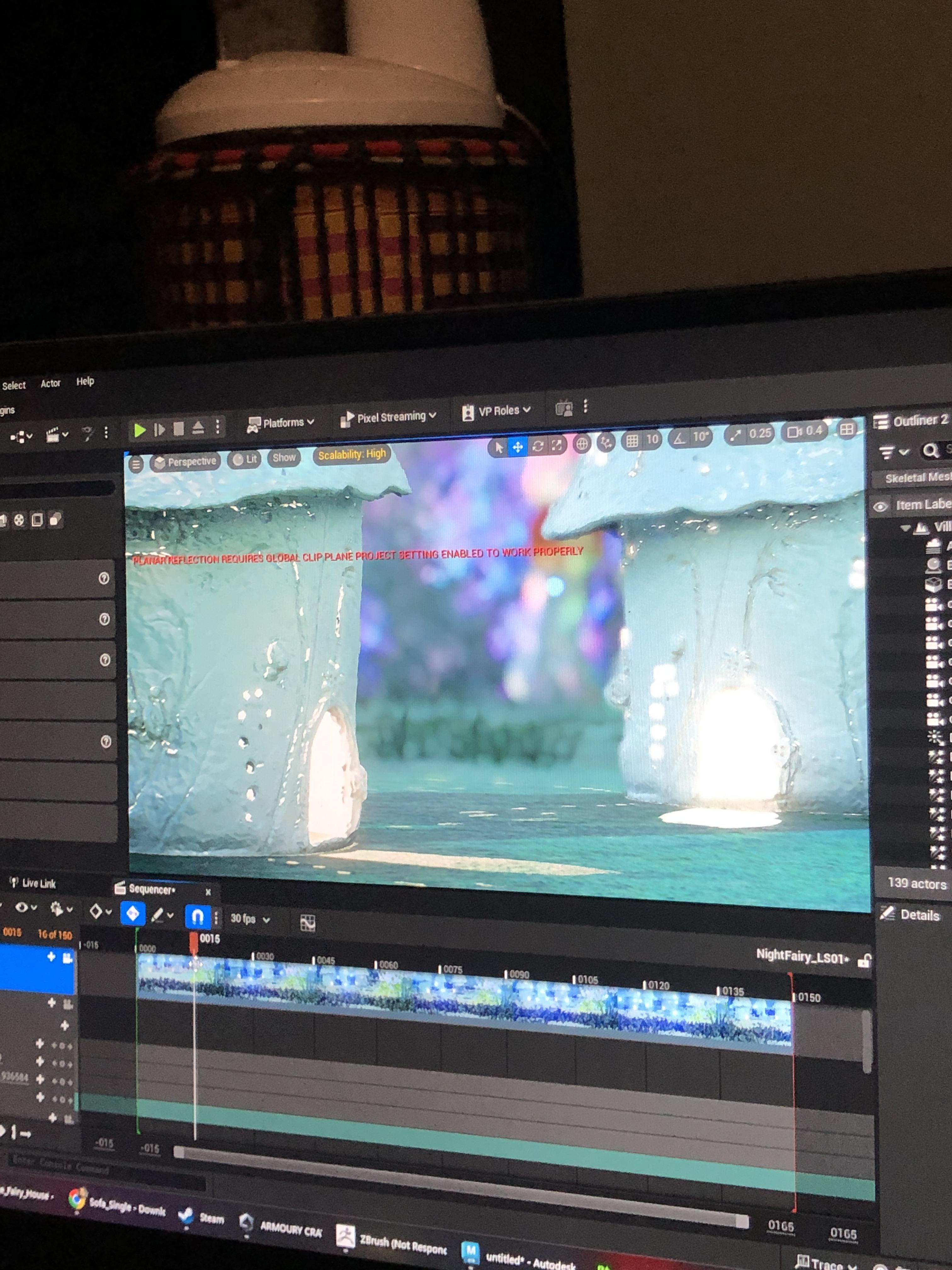
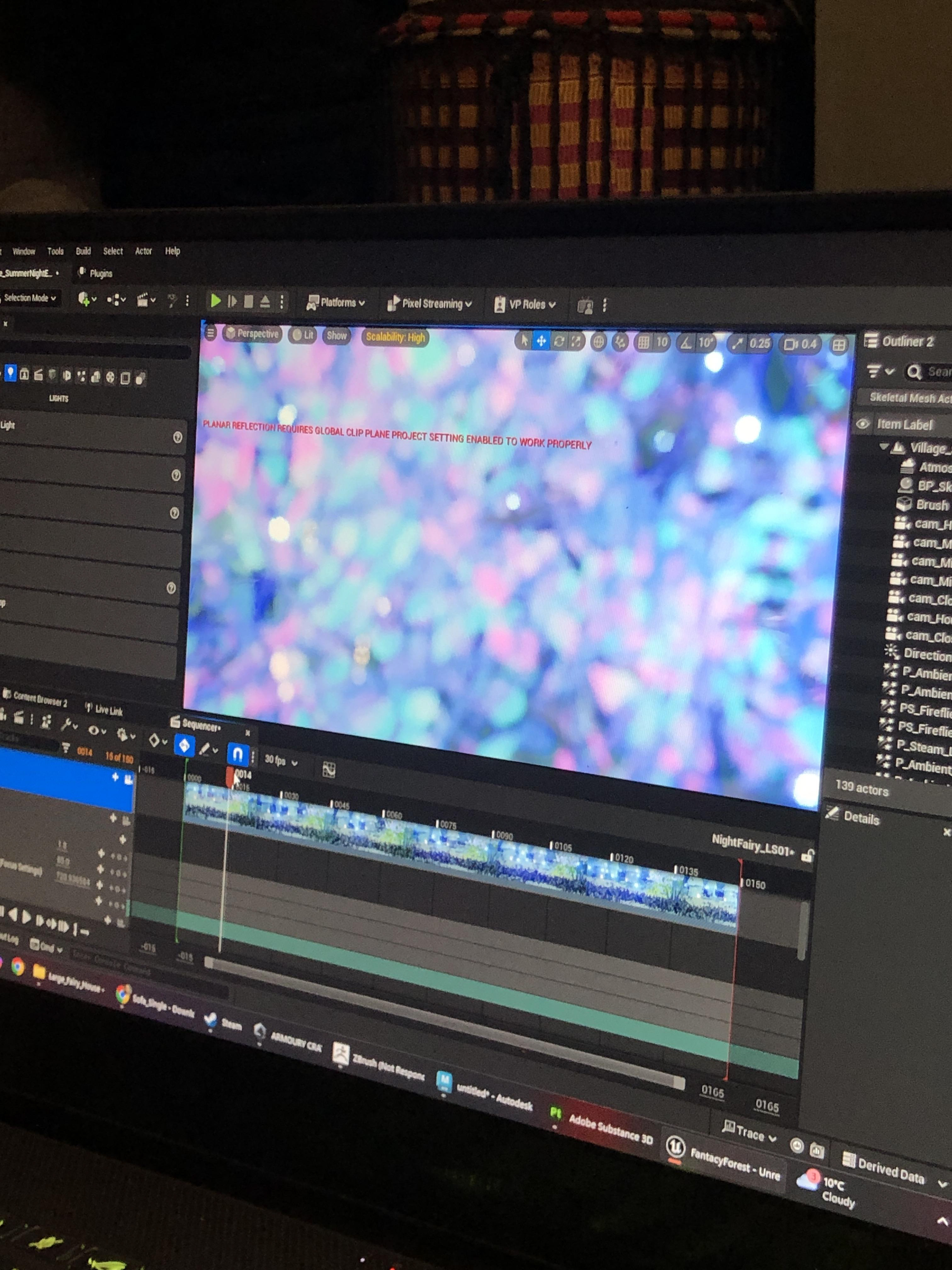
One of the key challenges of using Unreal game engine was the limited colour palette available to us for this project and it's assets. We had to colour grade the renders from the chosen camera scenes in Premiere to be able to achieve the rich, saturated colours for the project. In addition using virtual backgrounds requires an over-saturated image for the background.
An unexpected result of the renders for the backgrounds occurred with the particles. To create a render for the scenes, a digital camera needs to be placed in the digital environment. We found that as particles came close to the digital camera, they lost their pixel information, resulting in a glitchy effect. With limited time for re-renders, we chose to fill in these particles by touching up with colour information in Photoshop.
We were then able to take everything into the studio where I was able to animate the fairy as necessary, having a physical set placed in front of the digital.
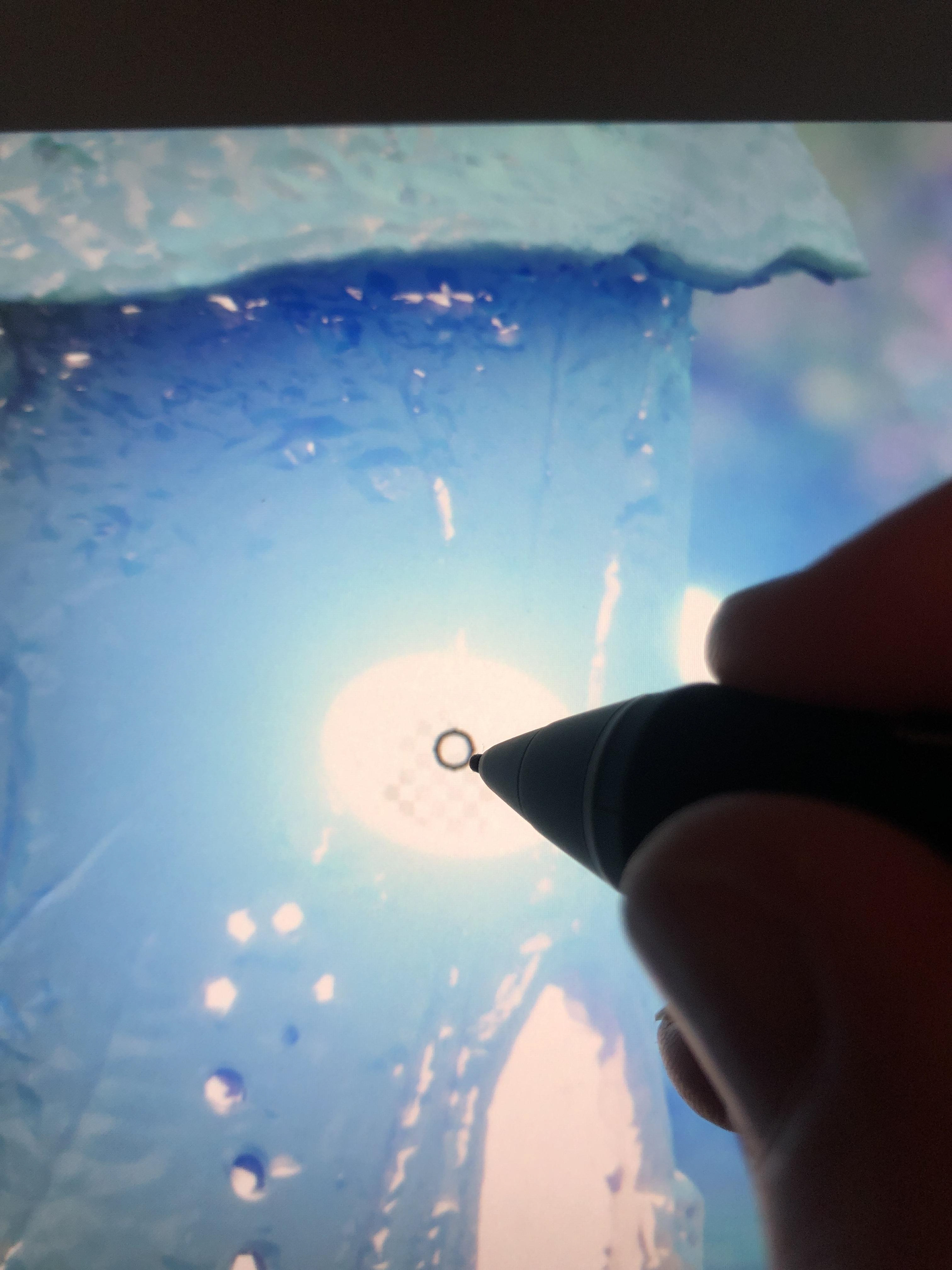
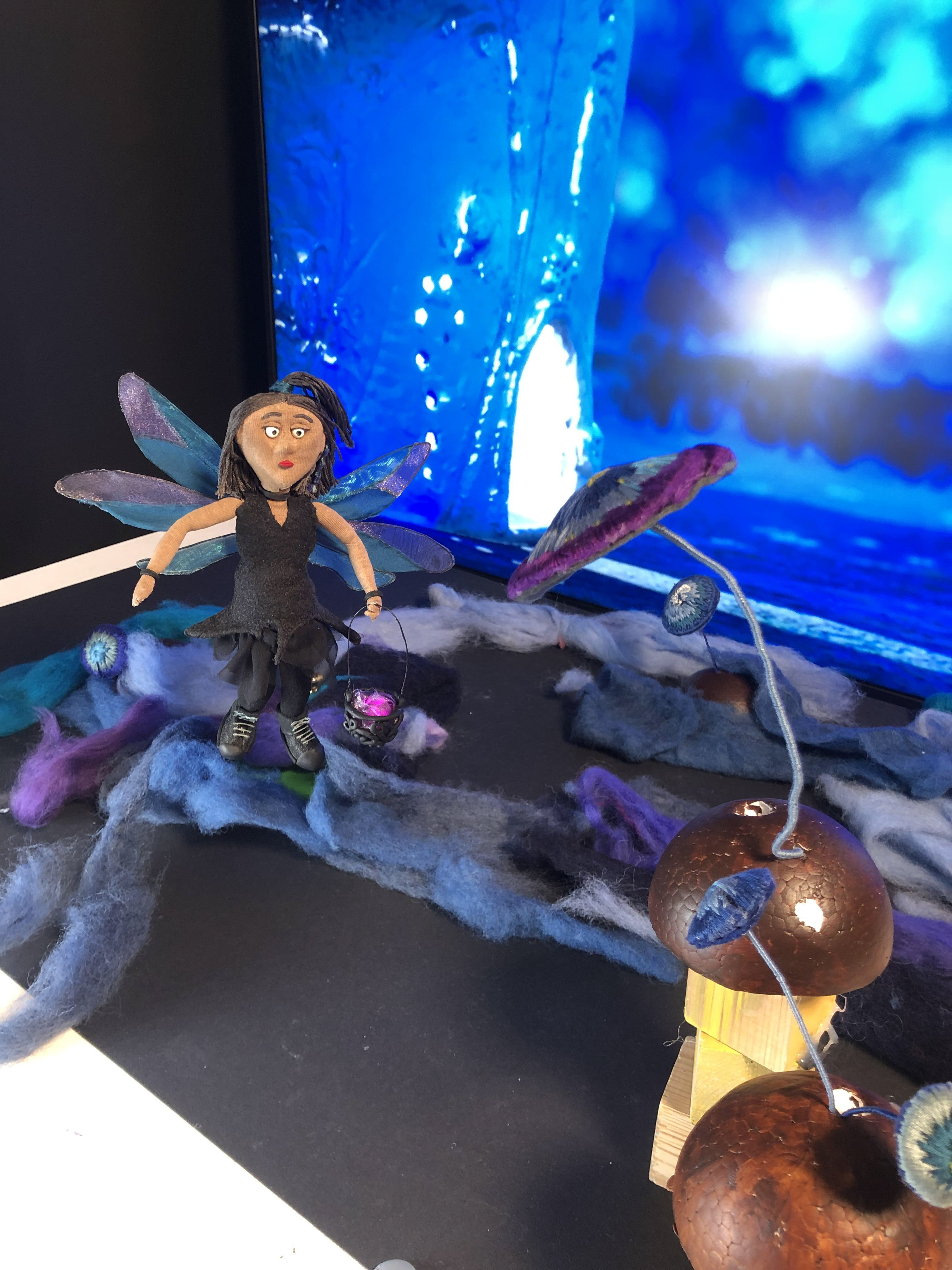
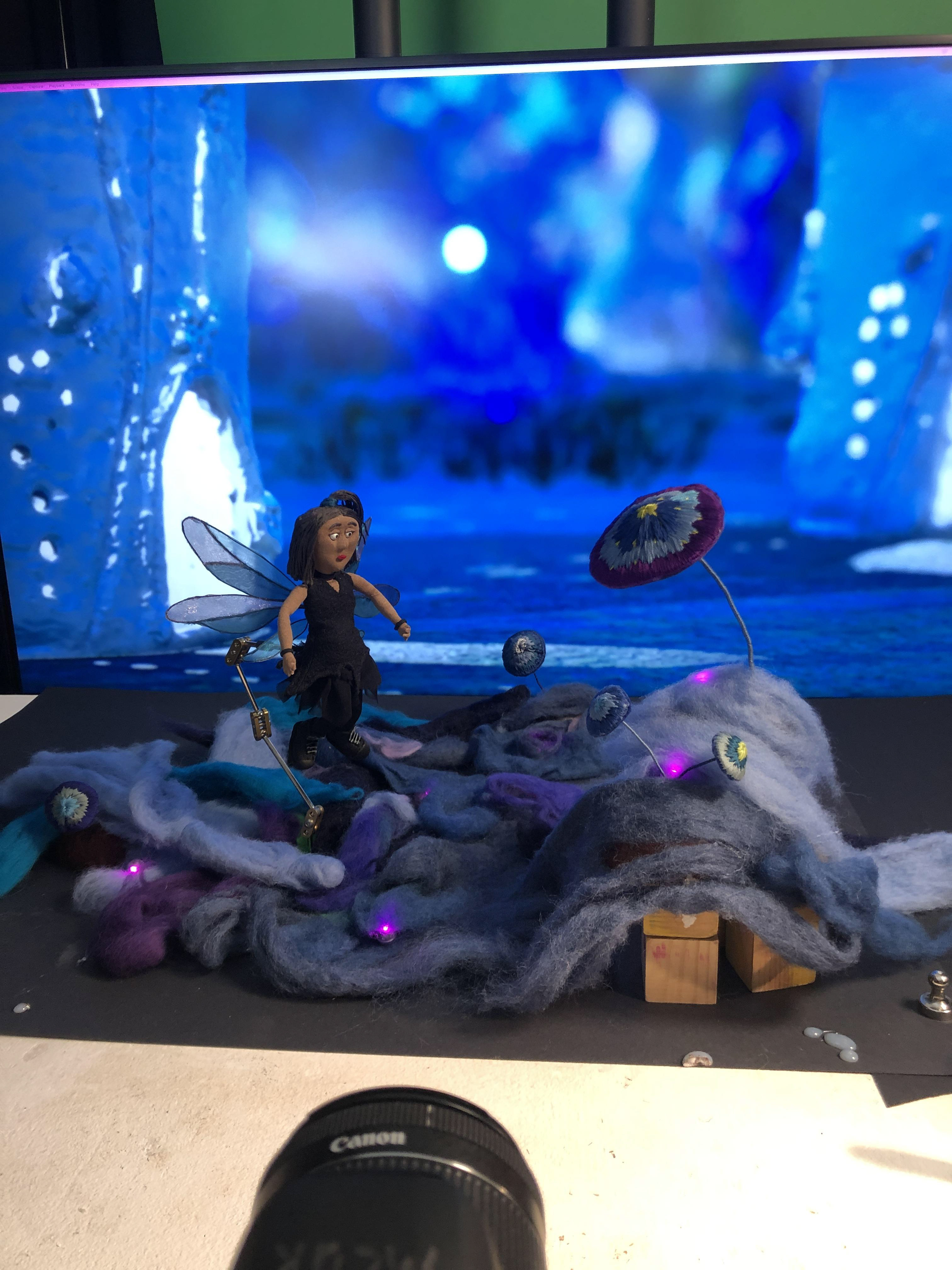
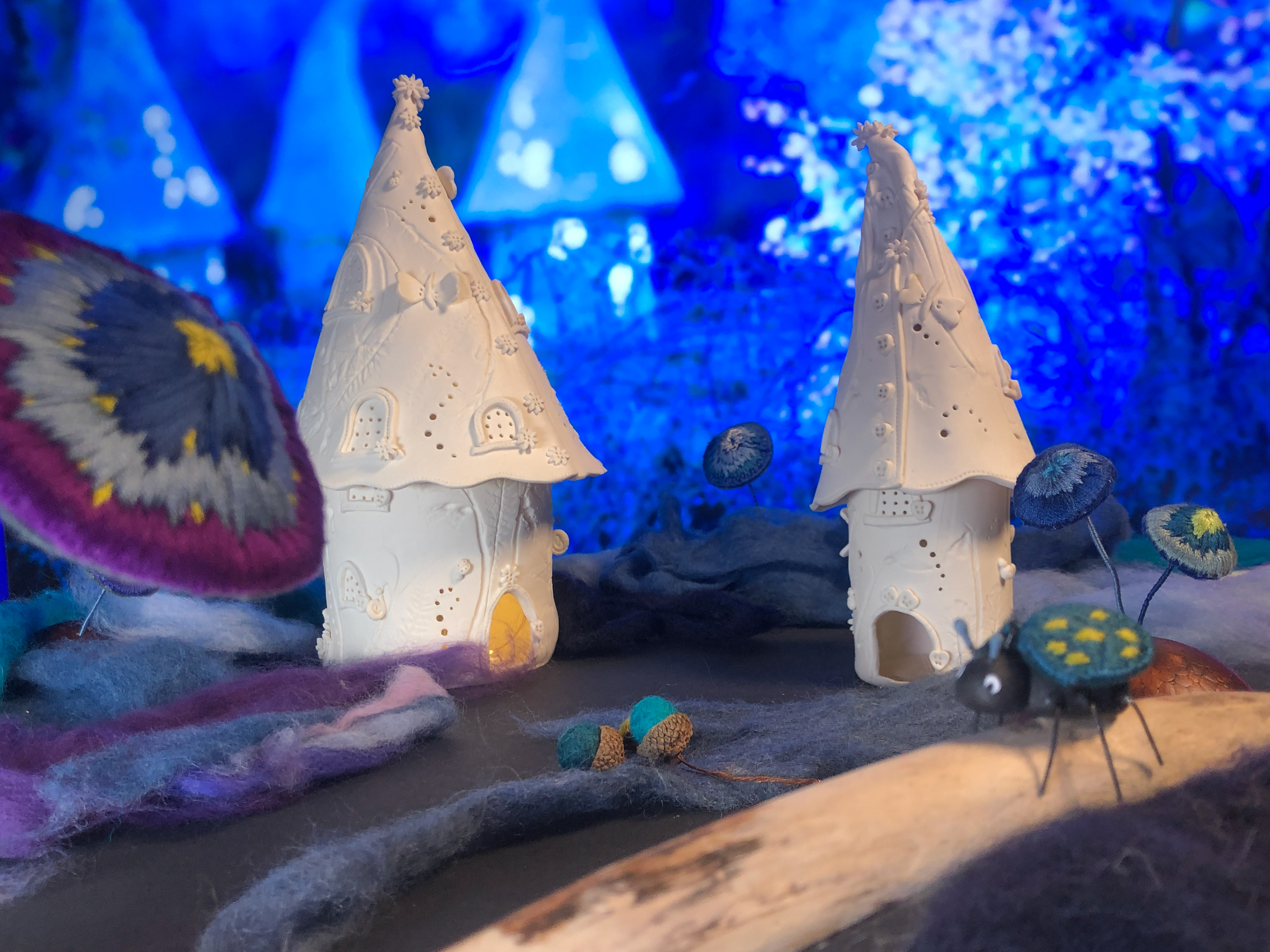
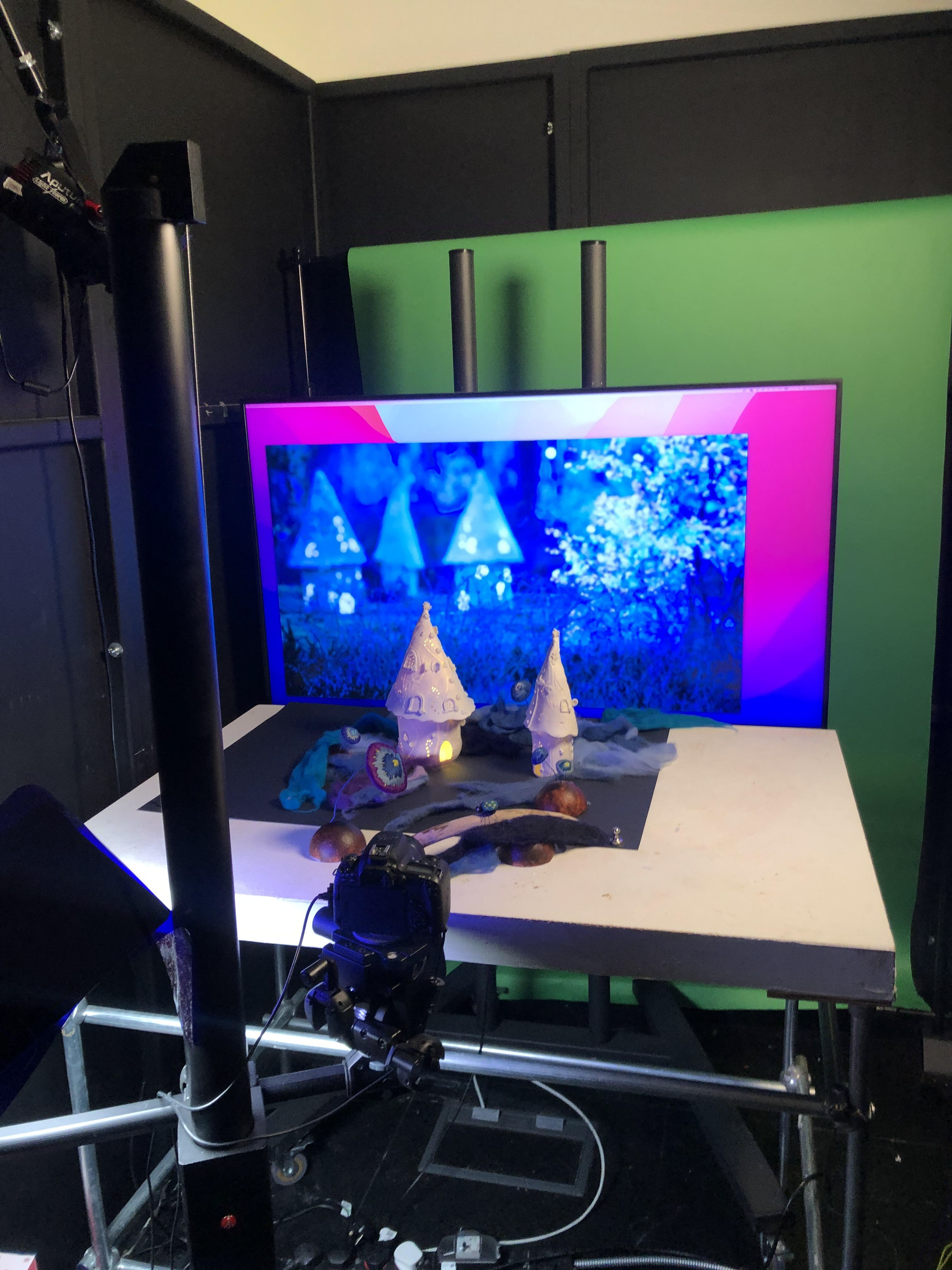
Finally, I added some more particles in the foreground of the images in After Effects, removed the rigs and edited the shots in Premiere Pro. I created a couple of versions including a version for social media which can be viewed on Instagram @katukastudios
Let me know what you think!
Porcelain Ceramics: Jude Mulford
Puppet Costume: Phoebe Niemira
3D Artist: Daniel Maktabi
Animation, Props, Sets, VFX, Edit: Cheryl Blake / Katuka Studios
Studio Hire: University of Salford
